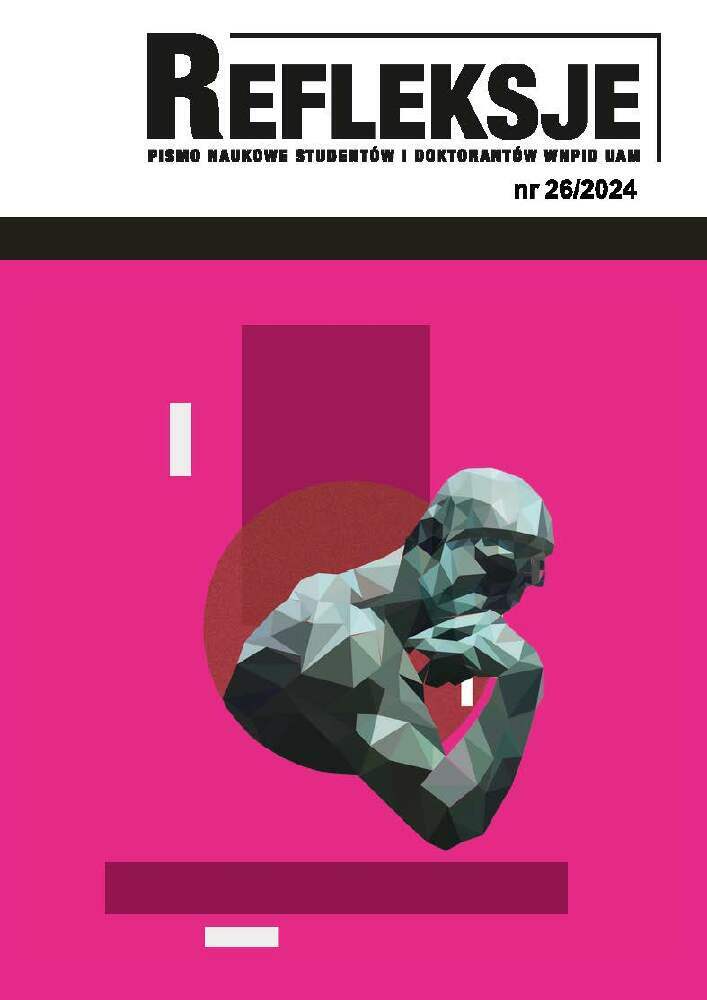Abstract
The article explores the causes of polarisation in the USA. The author delves into various factors, such as elite-level policy disagreements, national economic conditions, electoral institutions, media fragmentation, party realignment, social sorting, and racial diversity, in order to comprehensively understand how those factors contribute to the existing high, though not alarming, if to be compared with other developed countries, level of polarisation in the United States. To limit the scope of the research, only the causes of polarisation are examined, omitting the negative consequences that are apparent during high levels of polarisation. The article particularly explores the role of social media and the rise of populism, especially of right-wing populism, apparent with Donald Trump being elected as the 47th president of the USA. The study aims to provide a comprehensive understanding of the factors contributing to polarisation. The research is exploratory in nature, as it tries to gain familiarity with the phenomenon of polarisation, particularly in the United States, as well as gain new insights into it. The research question posed and explored by the author is: what are the primary causes of political polarisation in the United States? By exploring the topic as well as the research questions posed, the research, in addition to the above-mentioned purpose, seeks to contribute to the discourse on preserving and strengthening democratic institutions, as well as the strengthening of deliberate democracy in the face of increasing division.
References
Bail C. A., Argyle L. P., Brown T. W., Bumpus J. P., Chen H., Hunzaker M. B. F., Lee J., Mann M., Merhout F., Volfovsky A. (2018), Exposure to opposing views on social media can increase political polarization, “Proceedings of the National Academy of Sciences of the United States of America”, 115(37), 9216–9221. DOI: https://doi.org/10.1073/pnas.1804840115
Berman S. (2021), The causes of populism in the west, “Annual Review of Political Science”, 24(1), pp. 71–88. DOI: https://doi.org/10.1146/annurev-polisci-041719-102503
Boxell L., Gentzkow M., Shapiro J. M. (2021), Cross-country trends in affective polarization, NBER Working Paper No. 26669. DOI: https://doi.org/10.3386/w26669
Craig M. A., Richeson J. A. (2014), On the precipice of a “majority-minority” America: Perceived status threat from the racial demographic shift affects White Americans’ political ideology, “Psychological Science”, 25, pp. 1189–1197. DOI: https://doi.org/10.1177/0956797614527113
Dinkelberg A. et al. (2021), Multidimensional polarization dynamics in US election data in the long term (2012–2020) and in the 2020 election cycle, “Anal Soc Issues Public Policy”, 21, pp. 284–311. DOI: https://doi.org/10.1111/asap.12278
Drutman L. (2019), Let a Thousand Parties Bloom, “Foreign Policy”.
Gidron N., Adams J., Horne W. (2023), Who Dislikes Whom? Affective Polarization between Pairs of Parties in Western Democracies, “British Journal of Political Science”, 53(3), pp. 997–1015. DOI: https://doi.org/10.1017/S0007123422000394
Pew Research Center (2022), Trust in America: Do Americans trust their elections?
Roberts K. M. (2022), Populism and Polarization in Comparative Perspective: Constitutive, Spatial and Institutional Dimensions, “Government and Opposition”, 57(4), pp. 680–702. DOI: https://doi.org/10.1017/gov.2021.14
Vallier K. (2020), Trust and Polarization, Oxford Academic.
Hertel-Fernandez A., Mildenberger M., Stokes L. C. (2019), Legislative Staff and Representation in Congress, “American Political Science Review”, 113(1), pp. 1–18. DOI: https://doi.org/10.1017/S0003055418000606
Huber R., Schimpf C. (2017), On the Distinct Effects of Left-Wing and Right-Wing Populism on Democratic Quality, “Politics and Governance”, 5(4), pp. 146–160. DOI: https://doi.org/10.17645/pag.v5i4.919
Ibssa L., Kim, S. R. (2024), Trump doubles down on warnings of ‘migrant crime’ in border speech, ABC News.
Ivaldi G., Lanzone M., Woods D. (2017), Varieties of Populism across a Left-Right Spectrum: The Case of the Front National, the Northern League, Podemos and Five Star Movement, “Swiss Political Science Review”, 23(4), pp. 1–22. DOI: https://doi.org/10.1111/spsr.12278
Iyengar S., Lelkes Y., Levendusky M., Malhotra N., Westwood S. J. (2019), The origins and consequences of affective polarization in the United States, “Annual Review of Political Science”, 22, pp. 129–146. DOI: https://doi.org/10.1146/annurev-polisci-051117-073034
Kalmoe N., Mason L. (2021), When Partisans Endorse Violence, Niskanen Center.
Kelly M. (2021), Political polarization and its echo chambers: Surprising new cross-disciplinary findings, Princeton University Press.
Lauka A., McCoy J., Firat R. B. (2018), Mass Partisan Polarization: Measuring a Relational Concept, “American Behavioral Scientist”, 62(1), pp. 1–15. DOI: https://doi.org/10.1177/0002764218759581
Lelkes Y. (2016), Mass Polarization: Manifestations and Measurements, “Public Opinion Quarterly”, 80(S1), pp. 392–410. DOI: https://doi.org/10.1093/poq/nfw005
Lodge M., Taber C. S. (2013), The Rationalizing Voter, Cambridge University Press. DOI: https://doi.org/10.1017/CBO9781139032490
Mason L. (2016), A Cross-Cutting Calm: How Social Sorting Drives Affective Polarization, “Public Opinion Quarterly”, 80(S1), pp. 351–377. DOI: https://doi.org/10.1093/poq/nfw001
Mason L. (2018), Uncivil Agreement: How Politics Became Our Identity, University of Chicago Press. DOI: https://doi.org/10.7208/chicago/9780226524689.001.0001
Pariser E. (2011), The Filter Bubble: What the Internet is Hiding from You, Penguin Press. DOI: https://doi.org/10.3139/9783446431164
Pew Research Center (2022), Trust in America: Do Americans trust their elections?
Rasmussen Report (2018), 31% Think U.S. Civil War Likely Soon.
Sairam V., Heddesheimer V. S., Bryson J. J. (2022), Economic Insecurity Increases Polarization and Decreases Trust. DOI: https://doi.org/10.31235/osf.io/cmfvb
Smith L. G. E., Thomas E. F., Bliuc A. M. (2024), Polarization is the psychological foundation of collective engagement, “Community Psychology”, 2, 41. DOI: https://doi.org/10.1038/s44271-024-00089-2
Sunstein C. (2018), How Facebook Can Help Democracy, Facebook.
Sunstein C. R. (2016), The Internet and Political Polarization, The University of Chicago Law School.
Tausanovitch A. (2023), It’s Time To Talk About Electoral Reform, Center for American Progress.
Vallier K. (2020), Introduction: Trust and Polarization, Trust in a Polarized Age, Oxford University Press. DOI: https://doi.org/10.1093/oso/9780190887223.001.0001
Vespa J., Medina L., Armstrong D. M. (2020), Demographic Turning Points for the United States: Population Projections for 2020 to 2060, U.S. Census Bureau.
License
Copyright (c) 2024 Dmytro Muzychuk

This work is licensed under a Creative Commons Attribution 4.0 International License.

